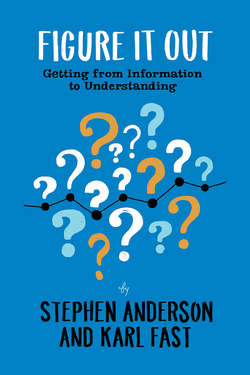Читать книгу Figure It Out - Stephen P. Anderson - Страница 9
На сайте Литреса книга снята с продажи.
PART
1 A Focus on Understanding
ОглавлениеFrom incomprehensible privacy policies to confusing medical explanations, we are often given information, but not understanding. But we can create—or at least reduce the cost of—understanding. By treating information as a resource, as raw material rather than a finished product, we give ourselves permission to adapt, modify, and transform it into a shape that aids understanding and makes us better thinkers.
Of course, this leads us to ask “where does understanding happen?” It’s a simple enough question, but one whose answer has broad implications for how we approach all problems of understanding.
We’ll explore how different schools of thought have answered this question, before sharing our own perspective on cognition, a perspective that allows us to make substantial headway on a wide range of messy, complex, real-world problems of understanding. In short, we’ll argue that thinking is spread across the brain, the body, and anything in the world.
This is critical, because we don’t just think. We create tools and technologies to help us think better, understand more, and solve bigger problems. Our ability to understand is limited when we try to do everything in our head, especially when we have lots of information and when the challenges are daunting. But when we spread the cost of understanding into the world, we open up incredible possibilities for understanding. We increase our capacity for understanding when cognition is seen as something that happens in and through the world.
